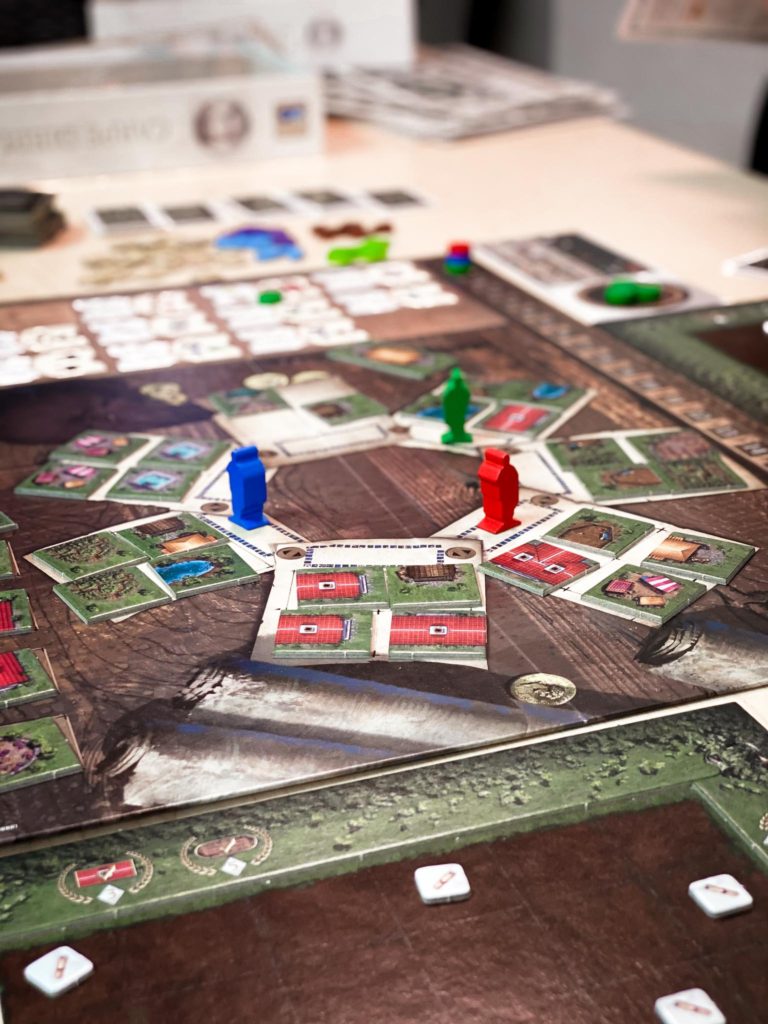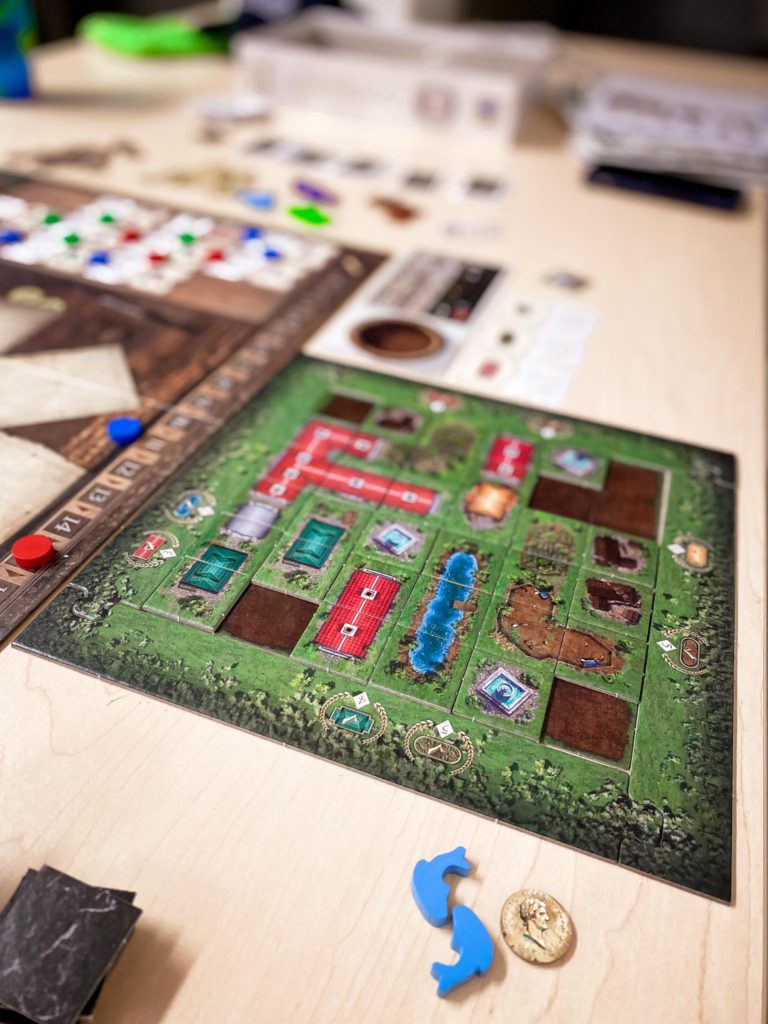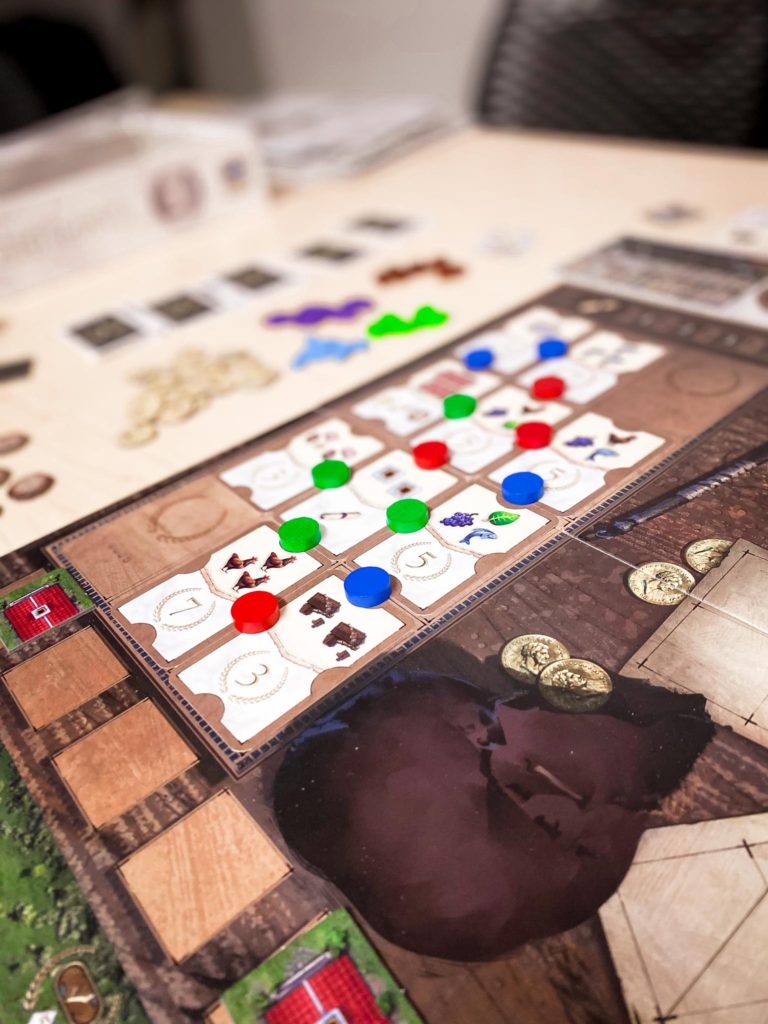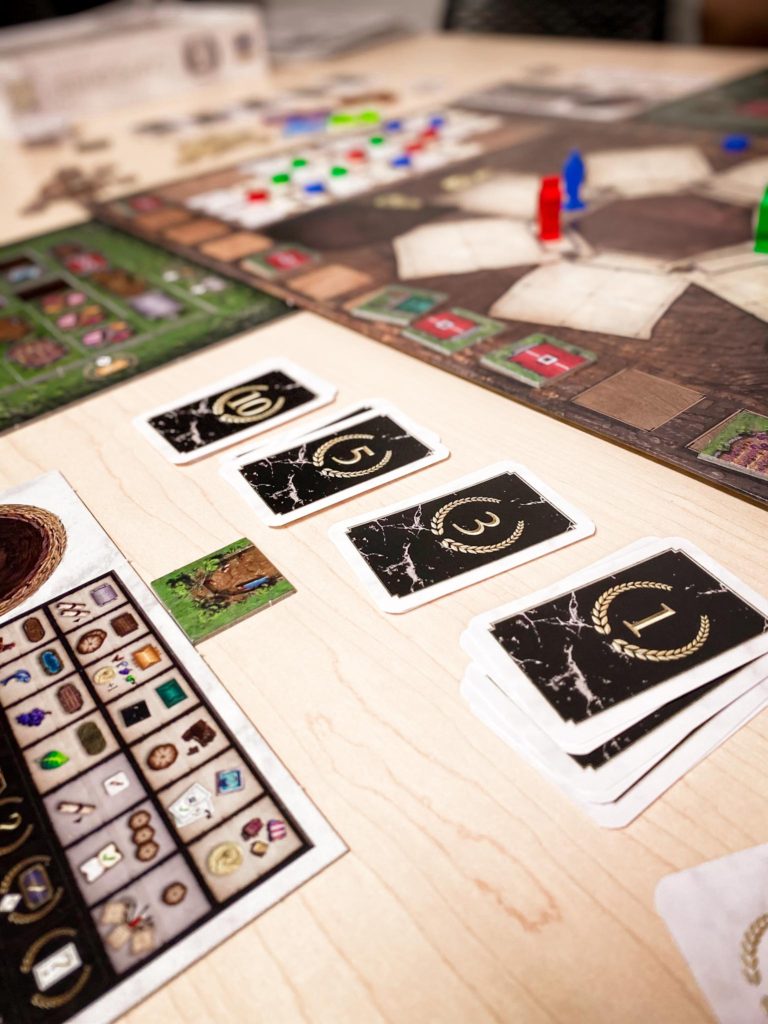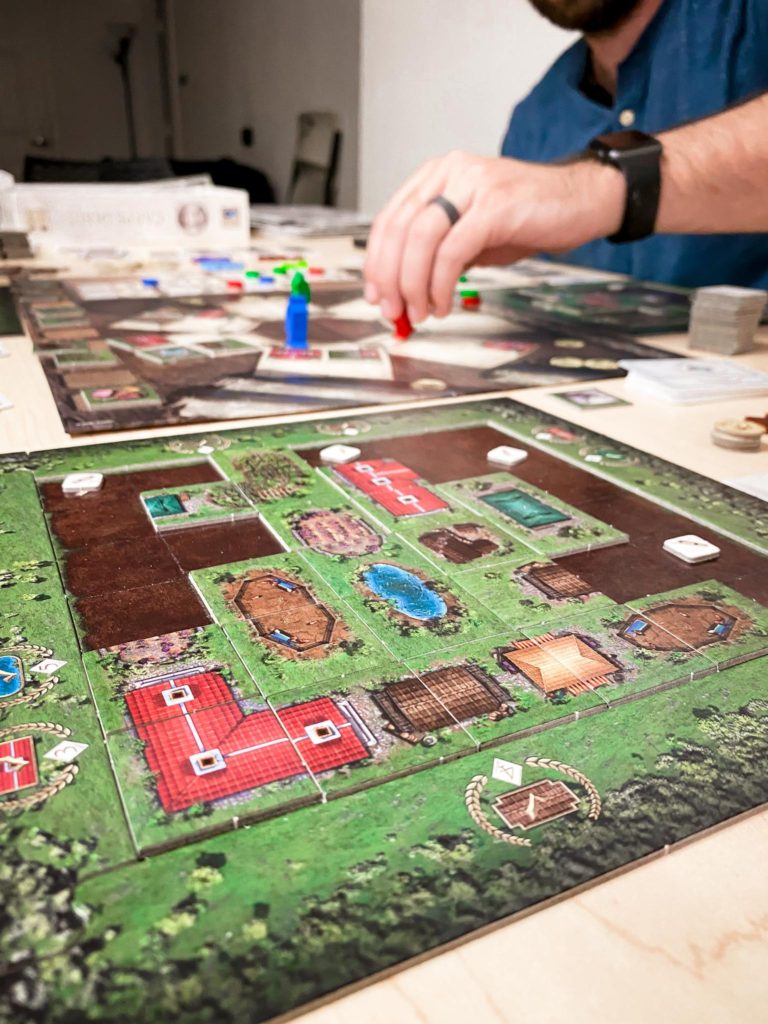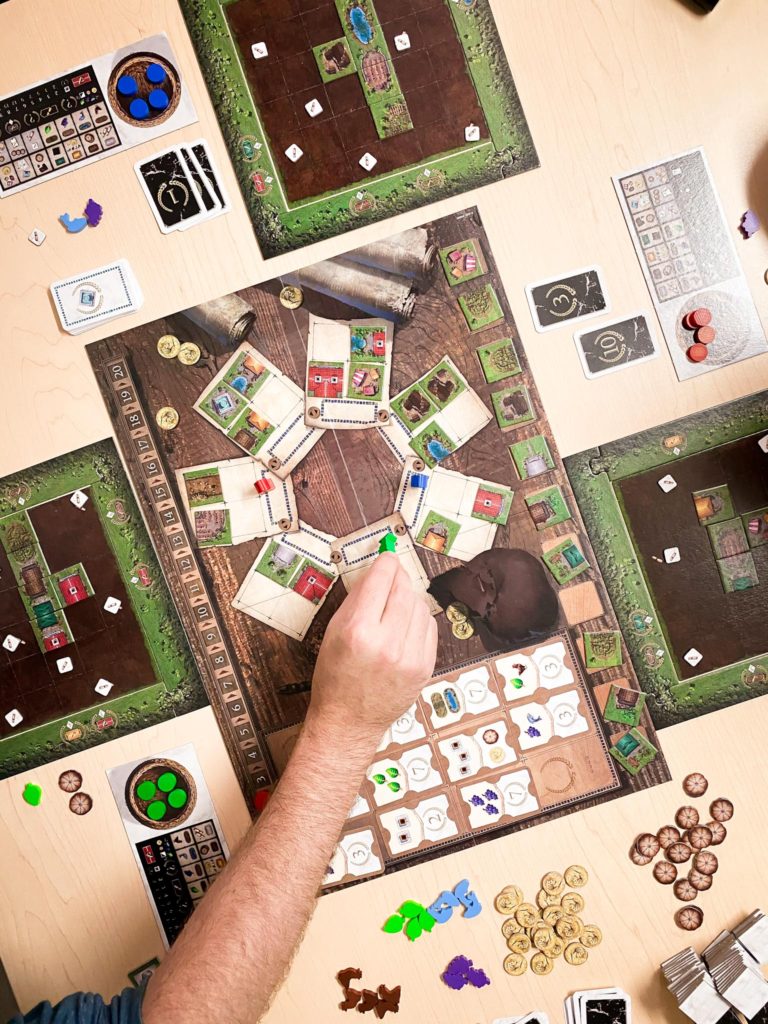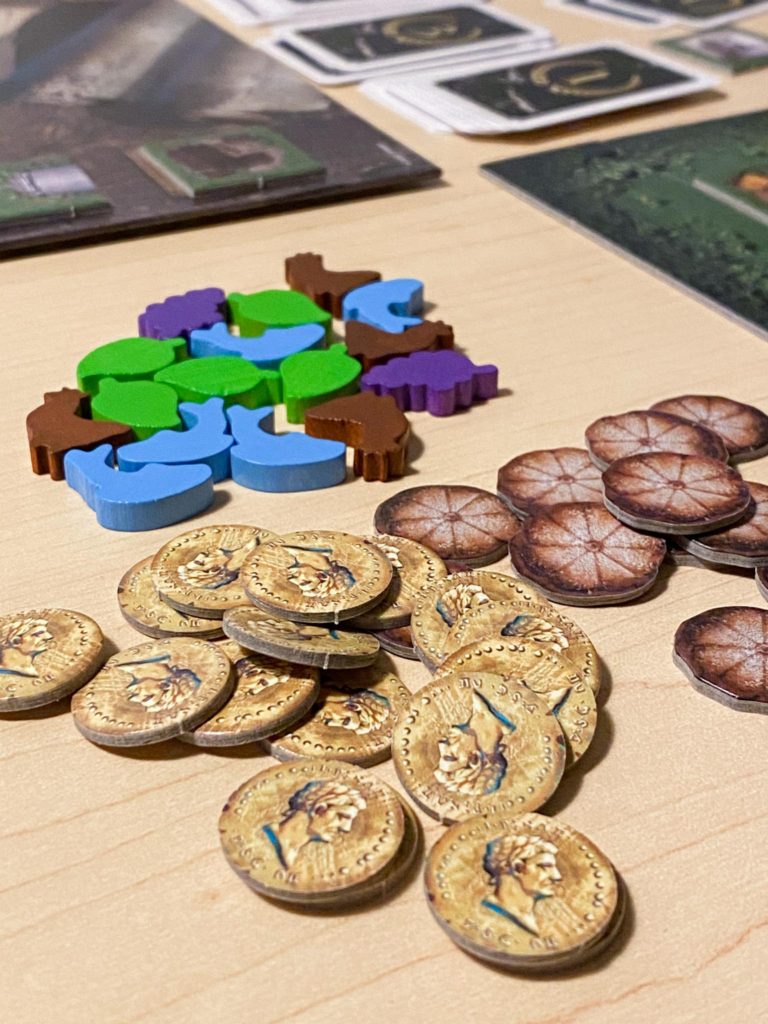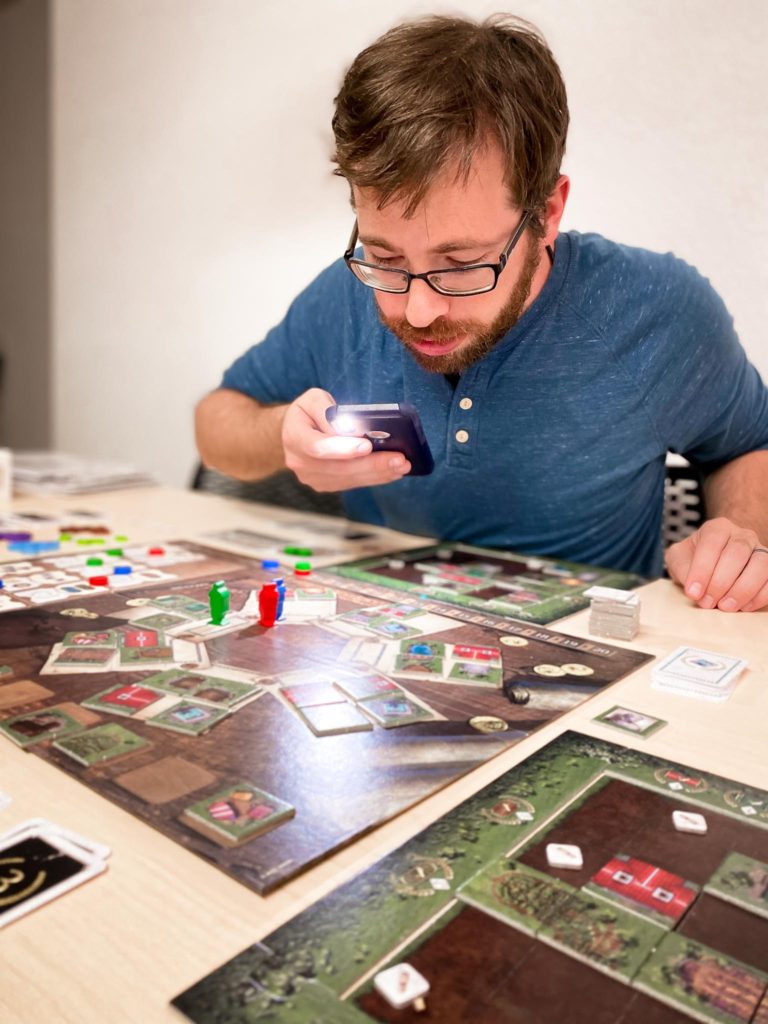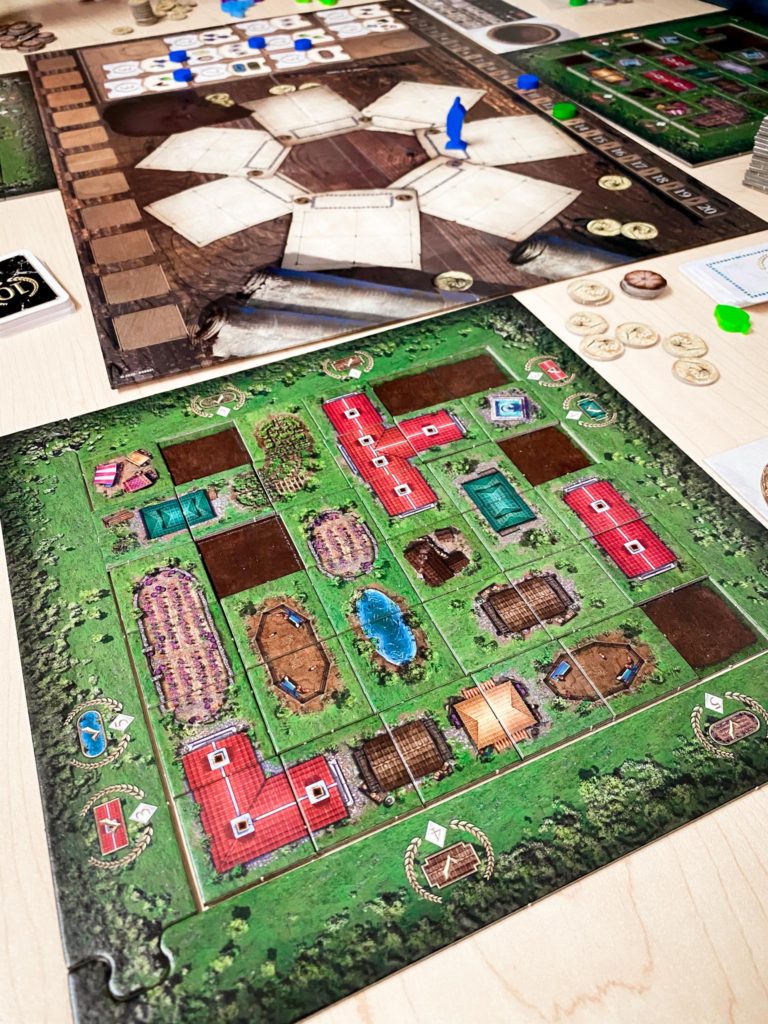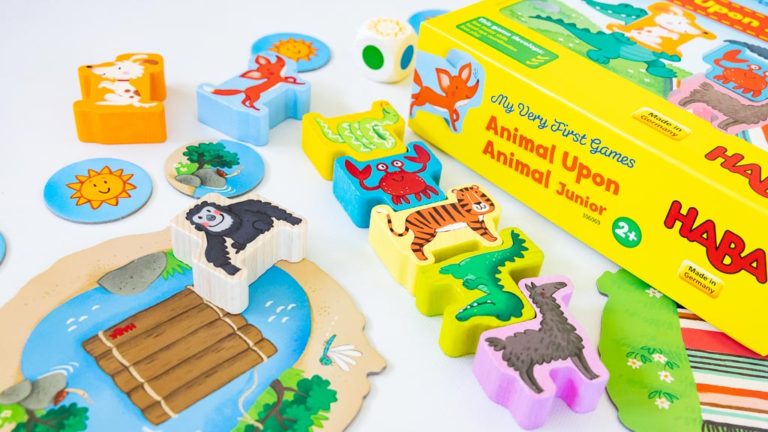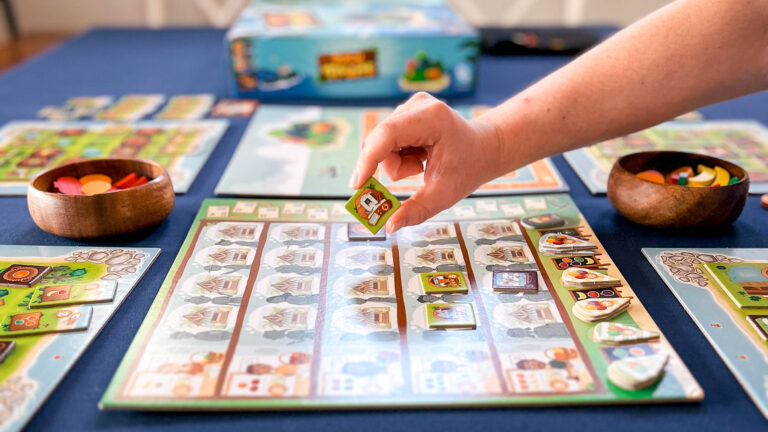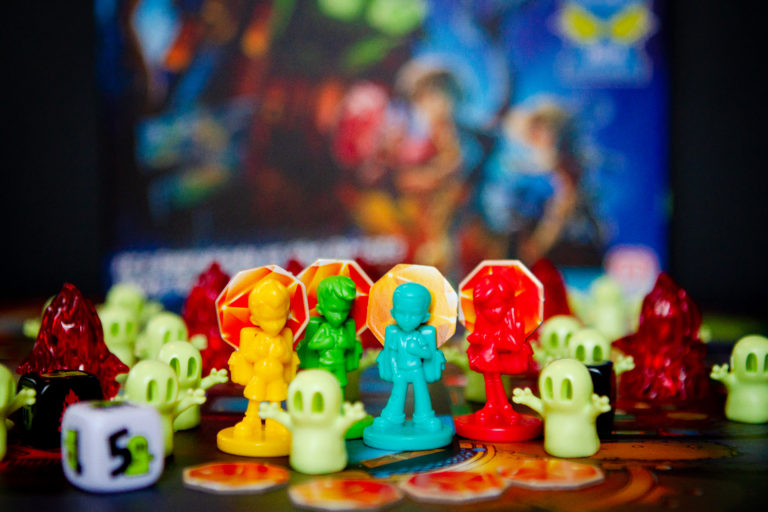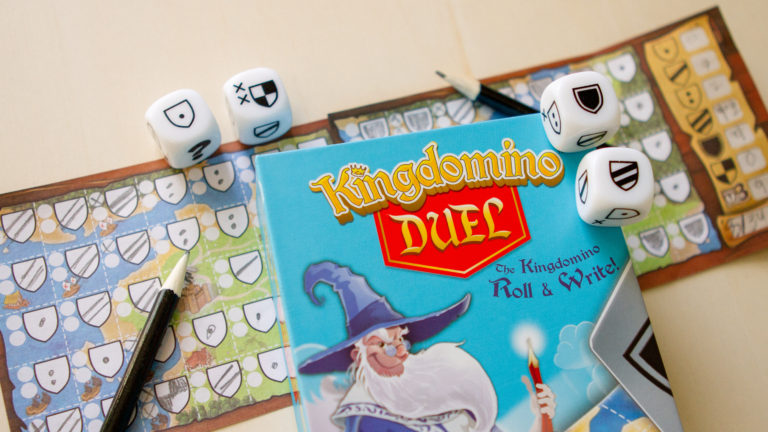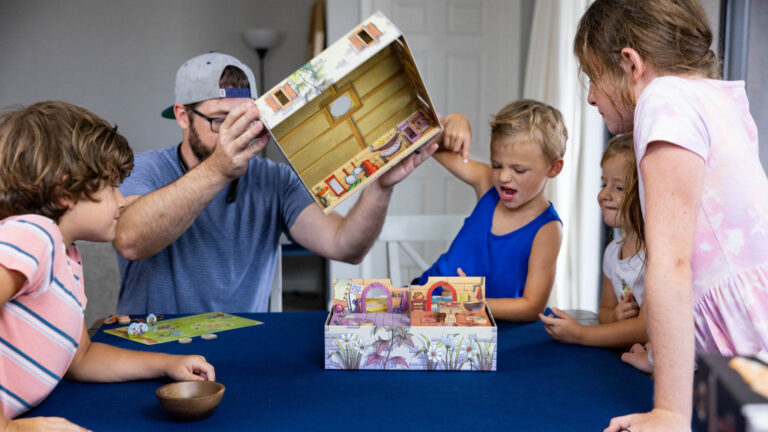It’s time to seize the day! We’re taking a look at Carpe Diem from designer Stefan Feld!
This new versions takes the original game and gives it a fresh coat of paint with new art and a streamlined design while still offering the original tile placement, point generating goodness found in the original.
What is Carpe Diem?
Carpe Diem is a tile drafting and placement game where you play as rich patricians in ancient Rome. Each player is attempting to build the most profitable city district.
Gameplay Overview?
Let’s first briefly go over the main elements of the game.
On the central board there are two sections: one where tiles are available and a second where victory cards are available. These victory cards are all visible and will not change for the entirety of the game. So every player knows from the start of the game how they will be able to earn victory points.
Each round begins by players drafting tiles from the rondel section of the board and placing them into their city district following all placement rules and restrictions. Each tile features a section of a building type. When players play a tile that connects two building sections to form a complete building, they earn a bonus reward. These come in the form of resources, money, additional turns, and victory points.
Once all of tiles have been drafted, the game moves to the scoring section of the board. Players will now, in turn order, place one of their player markers in-between the intersecting points of two of the cards. They then have the ability to pay the cost or fulfill the condition on the cards to earn the benefits.
Once a player marker is placed it remains there for the entirety of the game and that section of the scoring cards cannot be used again. Players calculate their scores by grabbing victory point cards.
After 4 rounds, the player with the most victory points wins.
What do we think?
Carpe Diem is truly a fantastic game to play! This may be my favorite Feld. It has everything you want in a euro game: filled with strategy and limited luck, indirect (though tension filled) player interaction, and a bevy of ways to rack up points and win!
We have been so impressed with the smoothness of the game play. It moves quickly from turn to turn and round to round with minimal downtime – especially at lower player counts. Like many Feld games, Carpe Diem has the puzzle quality to it that makes each game interesting and enjoyable. I always find myself wanting to play again to try and see if I can fit it together just a little bit better the next time.
Carpe Diem is a game of trade offs where every turn feels important. You can’t do everything that you want to do so you’re constantly having to decide what you’re going to pursue and what you’re going to abandon.
Excellent Scoring
What we love so much about Carpe Diem is how simple the scoring design is. Right from the very beginning, everyone knows all the ways that will be available to score. Yet once someone takes a scoring spot, no one else can go there so you have to be able to pivot. There is some hefty advance planning that is required to be successful here. I love that this not only means you are thinking through every single move and how it’ll impact all future rounds, but that it requires you to build a well rounded district so that you can pivot to a different strategy if necessary.
The tension this all generates in the game is exceptionally fun. I love that we are racing around the rondel to get the tiles we need. Desperately hoping someone else doesn’t snag them before us while closely monitoring which tiles they do add to their board — each placement can telegraph their scoring hopes and may impact what you choose to do.
This is most likely where the game gets its name, if you don’t “Seize the Day” and get your city built quickly, you’ll surely lose.
Building Your District
One of the fun aspects of a tile placement game is the ability to build something and watch it grow. I love having the freedom to build my city district how I wish. In other popular Feld games like in Castles of Tuscany which we recently reviewed, you don’t have such freedom. Each space on your board could only be occupied by a specific type of tile, in Carpe Diem however, you are free to build whatever you want, just so long as you follow the placement rules of not completing half a pond with half a barn.
On each players boards on the outer edge are building types. If a player builds that building on the bisection indicated they’ll earn victory points at the end of the game. I love that this is such an easy way to help players plan for what they may want to do and can guide strategy early on. Often in a game where there are so many ways to win players can feel overwhelmed and not know which avenues to pursue. Here that is certainly a possibility, but the player boards help give you something to work towards throughout.
The bisection scoring also helps contribute to the fun and stressful race to get the tiles you need to complete important buildings. We’re always trying to rush around the board before the other gets the tile first. It’s such a fun element of player interaction that adds a playful back and forth to the game.
Theme
The theme doesn’t really come through here. In fact, the box design compared to the game art itself feels like they belong to two entirely different games. This more just feels like your standard, abstract tile placement game — the theme isn’t really important, just there.
While we are more inclined towards thematic games ourselves, we think Carpe Diem is solid enough that this isn’t an issue.
Components
All of the components are fine. If you are familiar with the original design you will be delighted with the simplified rondel which says goodbye to the strange star movement.
That said, we did struggle with the art — we love the more realistic design to it, however it was very difficult for us to tell apart, especially from across the table. We had to turn on our flashlights for some direct lighting to help. The victory point cards all have a color outline, either red or green to indicate scoring condition, and even those are so faint it’s hard to tell which is which.
I greatly wish that the game art could have been improved to be less brown and faint and more bright and vibrant like the white marble box art. It’s just too “blah” compared to the eye catching box and because the dull nature of the art can make game play confusing it drags down an otherwise really fantastic game.
How does it play with two?
We love Carpe Diem at two! The game moves snappily along and has a really nice tension and sense of urgency to it with very minimal downtime between turns. Carpe Diem has a scaling mechanism for lower player counts that still has you put out all of the tiles as if you were playing at the full player count, but then you’ll remove all the tiles from a section after it has been visited twice, simulating having two other players at the table. It is an excellent way to scale the game without losing access to all the tiles available.
Can kids play?
Carpe Diem is language independent and relatively easy to learn. It’s the victory point cards that I think will be the biggest hurdle for younger players to overcome. This game requires a huge amount of future planning and strategy. From the very first turn, you have to be thinking not only about what you are going to score at the end of the round, but how you are going to use the moves you are making now to set yourself up for each and every subsequent round. You want to know which victory cards you are building towards so you can save up for those, but you also need to be flexible enough to pivot if another player goes there first.
This high level strategy is what makes Carpe Diem so fun, but also pushes it out of the realm for players much younger than 10 at the earliest. And even at 10, I highly recommend that that player have a decent amount of board game experience under their belts for the best results.
It is also important to note that there is a punishing element to the game. During the scoring phase of each round, when you place your scoring marker on a location, you have to be able to perform the scoring conditions on the cards you’ve chosen. If you cannot, then you are penalized and lose points. This can be extra frustrating during the game because you already feel punished by not being able to complete a victory point condition, losing out on all those points, then to add insult to injury you are penalized further and must give up even more points.
Even as an adult I find this frustrating. If I were to play this with a younger player I would probably omit this element for at least the first couple of games.
Summary
Carpe Diem is an excellent game. Simple to learn and understand but with so many ways to score and generate points you’ll be thinking of different ways to piece this puzzle together for many many plays. Carpe Diem is full of variability — each game will greet you with a new challenge forcing you to find new paths to victory. There’s a smoothness to the gameplay that makes Carpe Diem an instant recommend for anyone looking for that perfect gateway euro game.
If you’d like to bring home a copy of Carpe Diem for your home, you can find it here!
Find this and all our favorite board game on our Amazon Storefront.
A special thank you to our friends at Ravensburger for providing a copy of Carpe Diem for review. As always our thoughts and opinions are our own.
Game Info:
Title: Carpe Diem
2-4 Players Ages 10+
Designer: Stefan Feld
Artist: Lalanda Hruschka
Publisher: Ravensburger
If you liked this post you may also like:
The Castles of Tuscany Review
Viticulture Review
Why We Love Marvel Legendary

